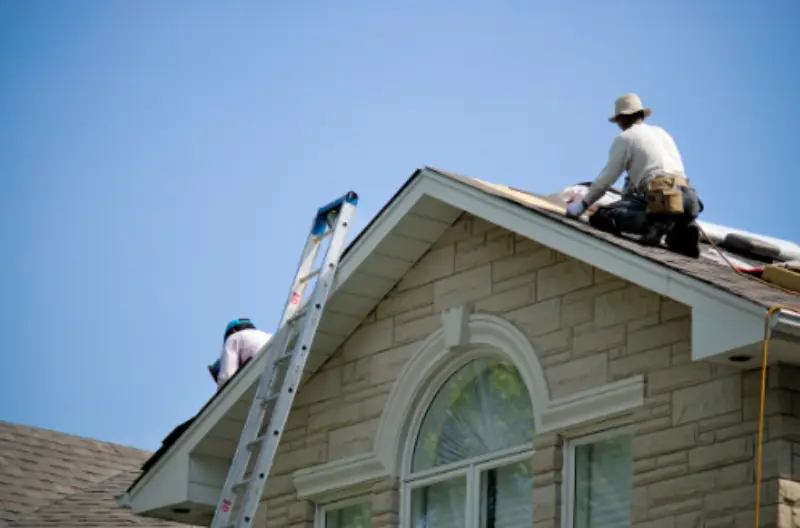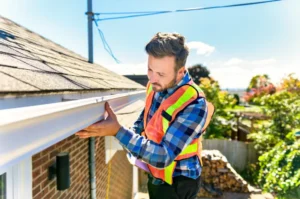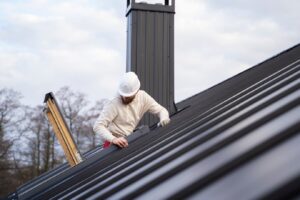Your roof is one of the most critical parts of your home, serving as the first line of defense against the elements. Proper care and upkeep can extend its lifespan, prevent costly repairs, and ensure your home remains protected year-round. Whether you’re a homeowner or managing a commercial building, maintaining your roof can seem daunting, but with the right guidance, it’s possible to handle many of the tasks yourself. Consider these tips for roof maintenance that will help you keep your roof in top shape across all seasons.
The roof shields your home from rain, wind, snow, and sun. However, exposure to these elements wears it down over time. Small issues like leaks, loose shingles, or damaged flashing can quickly escalate into more significant problems if not addressed promptly. Regular roof maintenance not only helps avoid expensive repairs but also improves your home’s energy efficiency by preventing drafts and heat loss.
By following these roofing maintenance tips for all seasons, you’ll be able to prevent common issues and keep your roof strong for years to come.
Table of Contents
Seasonal Roof Maintenance Tips
Roof maintenance should be an ongoing task throughout the year, as each season presents its unique challenges. Let’s take a look at key roofing maintenance tips for all seasons.
1. Roof Maintenance Tips for the Winter Season
Winter can be particularly harsh on roofs, especially in colder climates where snow and ice buildup can lead to serious damage. Check out these tips for roof maintenance during winters.
- Inspect for Ice Dams: Ice dams form when heat from inside your house causes snow on the roof to melt, which then refreezes at the edges of the roof. This can lead to water seeping into your home. Ensure proper insulation and ventilation in your attic to minimize this risk. Consider installing heat cables to melt ice before it accumulates.
- Clear Snow Accumulation: If you live in an area prone to heavy snowfall, use a roof rake to clear the snow, especially in vulnerable areas like valleys and around chimneys. Be cautious not to damage shingles. This is one of the most useful roof maintenance tips for your home.
- Inspect Flashing and Seals: Ice buildup can damage the flashing around chimneys, vents, and skylights. Check these areas to ensure they’re tightly sealed.
2. Roof Maintenance Tips for the Rainy Season
Rainwater can be your roof’s worst enemy if proper care is not taken. In areas where the rainy season is prominent, regular inspections and repairs are crucial.
- Check Gutters and Downspouts: Clear your gutters and downspouts of debris like leaves, twigs, and dirt. Blocked gutters can cause water to back up and lead to roof leaks. Ensure that downspouts are directing water away from the foundation of your home.
- Look for Signs of Leaks: After a rainstorm, inspect your attic for any signs of water leakage, such as wet insulation or damp spots. Address leaks promptly before they cause more extensive damage.
- Examine Roof Tiles and Shingles: Strong rains and wind can loosen shingles and tiles, making them susceptible to damage. Repair or replace any damaged shingles to prevent water penetration.
3. Roof Maintenance Tips for Spring
Spring is an ideal time for thorough roof inspections and minor repairs after the toll winter takes on your home and implementing some of the roofing maintenance tips for all seasons mentioned in this article.
- Remove Debris: Leaves, branches, and other debris tend to accumulate on roofs during winter. These can trap moisture, leading to the growth of mold and mildew. Clear your roof to prevent these issues.
- Inspect for Mold and Algae: Winter moisture often encourages the growth of mold and algae, which can degrade your roofing materials. Use a moss and algae remover or a simple solution of water and bleach to clean the affected areas.
- Check for Cracks and Wear: Spring is also the perfect time to look for any visible cracks in the roof’s surface, especially in areas where water is prone to collect. Seal cracks using roof cement or a patch to prevent further damage.
4. Roof Maintenance Tips for the Summer
Although summer may seem like a time of respite for your roof, intense heat can cause its own set of problems. It is important to consider roof upkeep during summers when learning about roofing maintenance tips for all seasons.
- Inspect for Heat Damage: Excessive heat can cause shingles to warp or crack, especially on older roofs. Take a close look at the surface to check for curling shingles or cracks that may need attention.
- Monitor for Signs of UV Damage: Prolonged sun exposure can lead to the degradation of roofing materials. Look for areas where the roofing material appears bleached or faded. If you notice any deterioration, you might need to apply a reflective roof coating.
- Trim Overhanging Trees: Trees can cause roof damage in multiple ways—branches can break off during storms, and overhanging limbs can scratch roofing materials, or provide a pathway for pests. Trim back any branches to keep your roof clear; this is also one of those tips for residential roofing maintenance that are worth implementing.
Roofing Maintenance Tips for All Seasons for Homeowners and Commercial Property Managers
Whether you’re a homeowner or responsible for a commercial building, these tips for roof maintenance for homeowners and tips for commercial roofing maintenance are essential to ensure your roof remains in good condition year-round.
1. Inspect the Roof Regularly
This is one of the most important tips for your roof maintenance. Schedule roof inspections at least twice a year, ideally in spring and fall. Look for any obvious signs of wear, such as cracked or missing shingles, rusted flashing, and damaged gutters. Regular inspections help you catch small issues before they turn into expensive repairs.
2. Repair Leaks Immediately
A minor leak can quickly turn into a major problem if left unchecked. Water damage from leaks can lead to mold growth, wood rot, and damage to your insulation. Always address leaks as soon as you spot them, no matter how small.
3. Check Roof Ventilation
Proper ventilation is crucial to maintaining a healthy roof. Poor ventilation can lead to excessive heat buildup in the attic, which can warp shingles and cause premature aging of the roof. It can also contribute to moisture problems, such as mold growth or ice dams in the winter. Ensure that your roof has adequate vents, and they are clear from blockages.
4. Clean and Maintain Gutters
Gutters play a critical role in guiding water away from your roof and home. Blocked gutters can lead to water pooling on your roof, increasing the risk of leaks. Clean your gutters regularly, especially during the fall and spring when debris tends to accumulate the most.
5. Ensure Proper Insulation
Adequate attic insulation helps regulate your home’s temperature and prevents heat from escaping through the roof. This is particularly important in preventing ice dams during the winter season. Make sure your attic is well-insulated to avoid temperature imbalances that can lead to roof damage.
When to Call a Professional
Regarding roofing maintenance tips for all seasons, while regular DIY roof maintenance can help you manage many issues, some situations call for professional assistance. Here are a few instances when you should contact a roofing expert:
- Major Leaks or Water Damage: If you notice large water stains, sagging ceilings, or visible mold, it’s essential to call a professional immediately. Extensive water damage can weaken your roof structure and requires professional repairs.
- Structural Damage: If your roof has suffered damage from a storm or heavy debris, such as a tree limb falling on it, don’t attempt to repair it yourself. These situations require professional assessment and restoration.
- Roof Replacement: If your roof is nearing the end of its lifespan—typically around 20 to 25 years—it might be time to consider replacing it. Consult with a professional roofing contractor in San Antonio to assess the condition of your roof and determine whether replacement is necessary.
Final Thoughts on Roof Maintenance Tips For Homeowners
Taking care of your roof is one of the most important responsibilities you have as a homeowner or property manager. With these important tips for roof maintenance, you can address minor issues before they become major problems. Regular maintenance, with these maintenance tips for the roof, can significantly extend the life of your roof, saving you time, money, and stress in the long run.
From inspecting for leaks after heavy rains to removing debris in the spring, these tips for roof maintenance for the winter season, rainy season, and spring will keep your roof in excellent condition throughout the year. Remember to inspect your roof regularly, address issues promptly, and know when it’s time to call in a professional. By following these roof maintenance tips for all seasons, you can ensure your roof provides reliable protection for many years to come.





